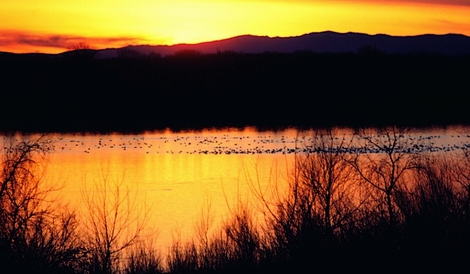
Ducks abound in the Highland Lakes area, and are found, basically, in two varieties — the puddle duck and the diving duck. According to Derrick Wolter, wildlife biologist with Texas Parks & Wildlife Department, the puddle duck species include mallard, gadwall, wigeon, blue-winged teal, green-winged teal, shovelers, and pintail. Diving ducks include ring-necked, lesser scaup, greater scaup, canvasback, redheads, and buffleheads.
Probably the best known of the puddle ducks in this area are the mallards, pintails, blue-winged teal, and green-winged teal. Puddle ducks are so named because of their feeding habits. These waterfowl prefer to dine on submerged vegetation in shallow puddles or along the shores of lakes and rivers in water no deeper than about 12-inches.

Puddle ducks feeding in shallow water
Their diet, in addition, includes lots of seeds — from corn, wheat, bulrushes, wild rice, primrose, willow, water elm, oak, hackberry and other trees along streams. And they also dine on mollusks, insects, small fish, tadpoles, freshwater snails, and fish eggs.
Puddle ducks are known for their amazing ability to suddenly rise veritically out of the water and enter immediately into flight.
Diving ducks are so called because they dive underwater for their meals, feeding on aquatic plants, fish, insects, mollusks, crustaceans, and other invertebrates. They can dive in water as shallow as 2-feet and up to 60-feet to for their food.
Diving duck heading down for food
Those waterfowl have limited agility on land because of their body structure. They have large, broad webbed feet they use as paddles, and their legs, spaced widely apart, are located well back on their body.
And they find it difficult to arise in flight. To become airborne, they must run across the water to build up speed for takeoff.
All of the ducks found in the Highland Lakes region are migratory waterfowl that winter here, with the exception of what is known as “park mallards.” These mallards are domestic ducks someone has released into the wild.
The blue-winged teal is the earliest duck species to migrate into this region, arriving here in late August. They usually leave following May, but the majority of ducks arrive here shortly after August and are all gone by the end of February.